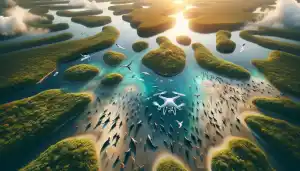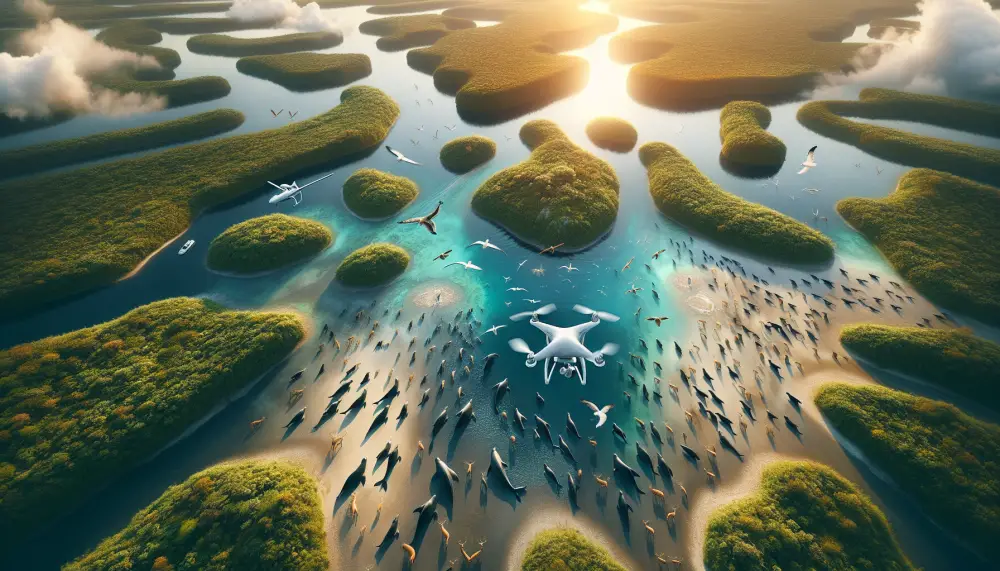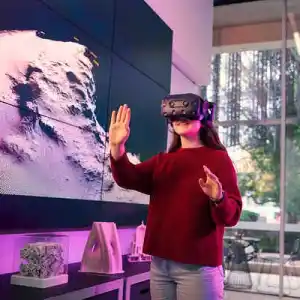The Transformative Role of Drones in Wildlife Research


Closing the Air Gap: The Role of Drones in Wildlife Research
Drones are transforming the landscape of scientific research, offering an innovative and non-invasive method for studying wildlife in their natural habitats. Groundbreaking research from Monash University and Phillip Island Nature Parks has demonstrated the growing role of drones in wildlife ecophysiology—the study of how animals' bodies function and interact with their environment.
A comprehensive review of scientific literature identified 136 studies utilizing drones to enhance wildlife research, a field that has seen remarkable growth since its inception. The first documented study appeared in 2010, with the number increasing to seven by 2018 and soaring to 27 by 2023. This upward trajectory reflects the increasing recognition of drones as essential tools for studying wildlife across various ecosystems, including marine environments and all seven continents.
Revolutionizing the Study of Large Marine Mammals
Drones have proven particularly invaluable in the study of large marine mammals, overcoming significant logistical challenges. According to lead researcher Adam Yaney-Keller, a PhD candidate at Monash University, traditional methods of studying massive marine species such as blue whales have been largely impractical.
“You can’t exactly keep some animals, like blue whales, in a tank while you measure their body condition, so there have been a lot of advancements in using images from drones to remotely obtain these metrics,” Yaney-Keller explained.
One of the most exciting innovations involves attaching specialized plates to drones, which are flown through a whale’s blow—the exhaled air released at the surface—to collect valuable biological data. This technique enables scientists to analyze microbiomes, hormones, genetics, and potential diseases affecting marine populations.
A New Era of Non-Invasive Research
Professor Richard Reina, head of Monash University’s Ecophysiology and Conservation Research Group, highlights the significance of these advancements in reducing human impact on wildlife.
“The field is making great progress in overcoming the ‘air gap,’ which refers to the physical distance between an animal and the technology used to study it,” Professor Reina noted. “By using drones, we are avoiding invasive methods that could disrupt an animal’s natural behavior, while also ensuring the safety of both researchers and wildlife.”
The use of drones now extends beyond marine mammals to various species, including manta rays, sharks, crocodiles, giraffes, and swans. Researchers are utilizing drone technology to track movement patterns, assess energy expenditures, monitor stress responses to human activities, and detect emerging health threats.
Enhancing Conservation Efforts Through Aerial Surveillance
Phillip Island Nature Parks Marine Scientist Rebecca McIntosh emphasized the growing potential of drone technology in conservation. Since 2016, drones have been employed to monitor and record population trends of Australian fur seals. This approach has provided critical insights into wildlife dynamics and conservation strategies.
“This review highlights the tremendous benefits of drone technology for wildlife research worldwide,” McIntosh said. “The possibilities for conservation applications are expanding, paving the way for more efficient and effective monitoring methods.”
Yaney-Keller's PhD research further underscores the potential of drones equipped with thermal imaging to detect and respond to plastic entanglements among wild seals on Phillip Island. The findings have been published in the peer-reviewed journal Biological Reviews and are accessible online at: doi.org/10.1111/brv.13181.
Applying Innovation to Shape the Future of Wildlife Research
As drone technology continues to advance, so do its applications in wildlife research and conservation. With the ability to collect detailed ecological data while minimizing human impact, drones represent a crucial step toward a more sustainable and effective approach to studying animal physiology and health.
For students passionate about environmental science and technological innovation, leveraging tools like drones in research presents exciting career prospects. MyCourseFinder.com is committed to guiding students toward programs that integrate cutting-edge technology with wildlife conservation, ensuring the next generation of researchers has the knowledge and skills needed to make a meaningful impact. Apply today through MyCourseFinder.com and take the first step toward shaping a future where technology and conservation work hand in hand.










